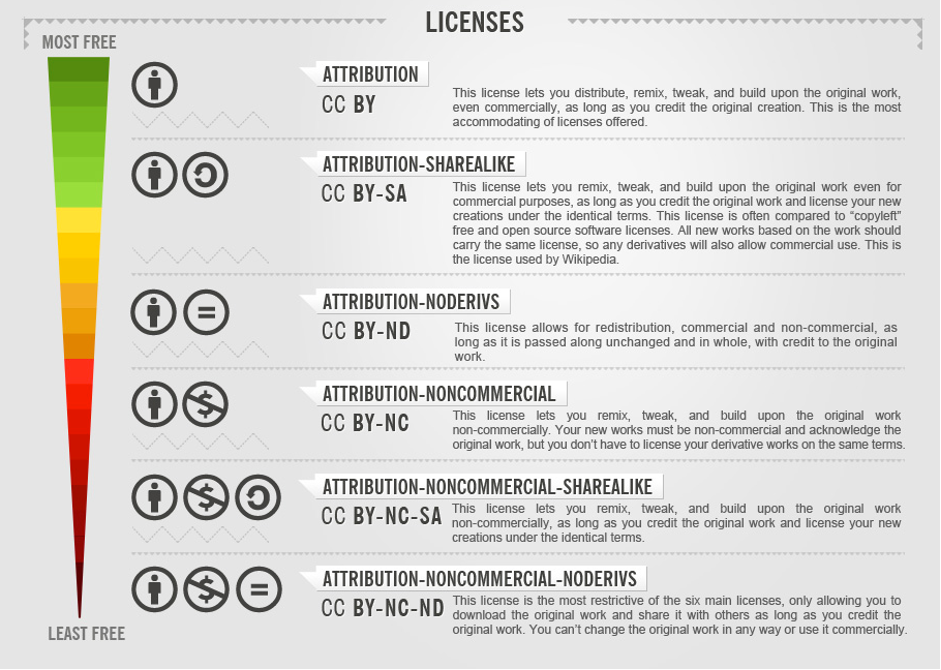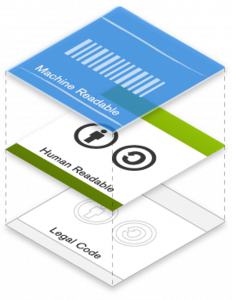Creative Commons Licenses and their Significance for Higher Education
After reviewing this chapter, you should be able to:
- describe creative commons licenses along with its (1) layers and (2) elements
- describe the significance of Creative Commons licensing for higher education
Have you ever experienced confusion or doubt around being able to use a particular creative work? Even though Fair Dealing applies to many use cases in our teaching and learning work, because of copyright anxiety, instructors and students are often still hesitant and full of doubt when it comes to the use of creative works. What if a creator of a copyrighted work could explicitly share how the public should and should not use their work? Open licenses do just that!
Creative Commons licenses allow rights holders to keep their copyrights while sharing their works on more flexible terms than the default “all rights reserved.” Copyright is automatic, whether you want it or not. And while some people want to reserve all of their rights, many want to share their work with the public more freely. The idea behind CC licensing was to create an easy way for creators who wanted to share their works in ways that were consistent with copyright law. There are 6 CC licenses, comprised of four elements. The elements quickly communicate to users how the creator of a given work does (or doesn’t) want their work to be used.

How To Attribute Creative Commons Photos by Foter is licenced under a CC BY-SA 3.0 License
A creative commons license includes three layers:

- The legal code contains the “lawyer-readable” terms and conditions that are legally enforceable in court.
- The commons deeds are the most well-known layer of the licenses and are the layer that include the “human-readable” terms.
- In order to make it easy for websites and web services to know when a work is available under a Creative Commons license, we provide a “machine readable” version of the license.
For a brief history of Creative Commons, see:
Creative commons licensing enables a robust and healthy commons. In turn, a healthy and robust commons are essential for a just higher education system. As economist David Bollier describes it, “a commons arises whenever a given community decides it wishes to manage a resource in a collective manner, with special regard for equitable access, use and sustainability.” Wikipedia is a good example of a commons-based community around CC-licensed content.
Use the License Chooser tool on the Creative Commons website to choose an appropriate license for your creative works.
Test your knowledge about Creative Commons here:
The content in this chapter is adapted and remixed from the following sources:
Creative Commons Certificate course licensed under a Creative Commons Attribution 4.0 International License.
The OER Starter Kit by Abbey K. Elder licensed under a Creative Commons Attribution 4.0 International License, except where otherwise noted.

